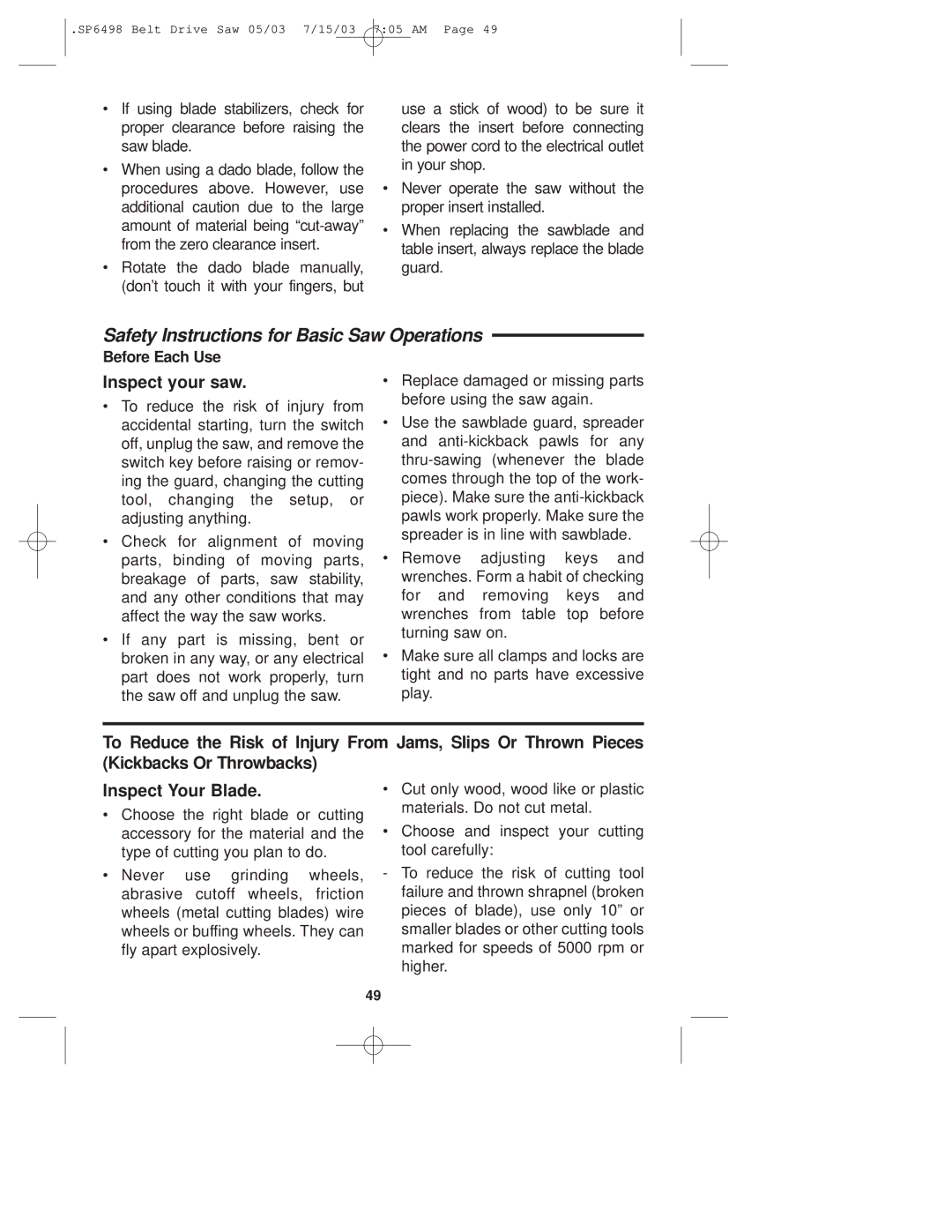
.SP6498 Belt Drive Saw 05/03 7/15/03 7:05 AM Page 49
• | If using blade stabilizers, check for |
| use a stick of wood) to be sure it |
| proper clearance before raising the |
| clears the insert before connecting |
| saw blade. |
| the power cord to the electrical outlet |
• When using a dado blade, follow the |
| in your shop. | |
|
| ||
| procedures above. However, use | • | Never operate the saw without the |
| additional caution due to the large |
| proper insert installed. |
| amount of material being | • | When replacing the sawblade and |
| from the zero clearance insert. |
| table insert, always replace the blade |
|
|
| |
• | Rotate the dado blade manually, |
| guard. |
| (don’t touch it with your fingers, but |
|
|
Safety Instructions for Basic Saw Operations
Before Each Use
Inspect your saw.
•To reduce the risk of injury from accidental starting, turn the switch off, unplug the saw, and remove the switch key before raising or remov- ing the guard, changing the cutting tool, changing the setup, or adjusting anything.
•Check for alignment of moving parts, binding of moving parts, breakage of parts, saw stability, and any other conditions that may affect the way the saw works.
•If any part is missing, bent or broken in any way, or any electrical part does not work properly, turn the saw off and unplug the saw.
•Replace damaged or missing parts before using the saw again.
•Use the sawblade guard, spreader and
•Remove adjusting keys and wrenches. Form a habit of checking for and removing keys and wrenches from table top before turning saw on.
•Make sure all clamps and locks are tight and no parts have excessive play.
To Reduce the Risk of Injury From Jams, Slips Or Thrown Pieces (Kickbacks Or Throwbacks)
Inspect Your Blade.
•Choose the right blade or cutting accessory for the material and the type of cutting you plan to do.
•Never use grinding wheels, abrasive cutoff wheels, friction wheels (metal cutting blades) wire wheels or buffing wheels. They can fly apart explosively.
•Cut only wood, wood like or plastic materials. Do not cut metal.
•Choose and inspect your cutting tool carefully:
-To reduce the risk of cutting tool failure and thrown shrapnel (broken pieces of blade), use only 10” or smaller blades or other cutting tools marked for speeds of 5000 rpm or higher.
49
